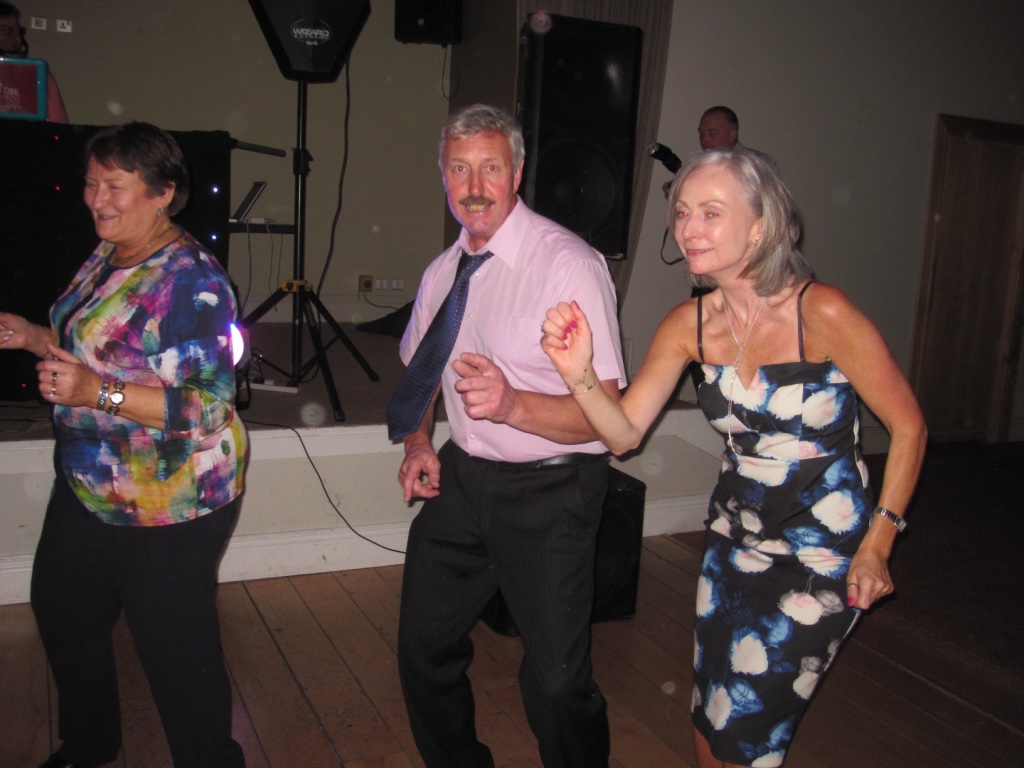Both in clinical practice but also meeting people at games, the conversation invariably turns to injury rates and long-term consequences. “He’s been out for months with his groin”, “He’s pulled his hamstring again for the third time this year” “She’s done her ACL again” “He’s stopped playing because of his back” are some of the common stories that filter through. However, I feel that the focus on injuries masks the fact that the benefits to sports participation far outweigh the negative consequences for a number of reasons:
Regular exercise is good for our physical and mental well being
Training habits and knowledge gained during sports participation can be carried into later life
The discipline and structure of training and team sports participation are vital skill sets in all aspects of life
The social network and the social skills developed during team sports involvement last your entire life
This is coupled with the fact that there is very little evidence to highlight spikes in injury rates over the last number of years.
However, it is important to recognise the fact that the demand of the games are continuing to change over time and the speed and power required to compete as well as the fitness levels to sustain it have increased across all levels from club to intercounty over the last number of years and the body is naturally going to suffer more as a consequence. There has certainly been an anecdotal increase in certain injuries over this time with the hip and groin, an area I am involved in clinically and in research, being one of the more common troublesome areas.
While changes in the demands of games are inevitable as sport changes over time there are a number of areas that contribute heavily to chronic and recurrent injuries that greatly impact our players’ health and sporting career that we can have very positive changes on.
Chronic Injury Factors
More is not always better and some of the training loads that players undertake currently are not only counterproductive from a performance point of view but also from an injury standpoint. The vast majority of chronic injuries develop gradually over time with the excessive training and playing loads the biggest driver.
This is in part due to players playing with a number of teams concurrently at various parts of the season. This issue has been exhaustively discussed but still remains to be appropriately addressed for talented players heading to college where they may have the club (underage and senior), college (fresher/senior) and intercounty (U-21 and senior) commitments from Sept/Oct right through to March/April.
At intercounty levels, the fitness demands required to compete at the highest level not only ensure there is a large casualty list due to the training required and the lack of recovery for full time working players but also it is extremely difficult for top teams to be successful season on the season as the inevitable cost of success, both mentally and physically, catches up on them. On top of this, there is a huge disparity in the quality of the strength and conditioning and fitness training delivered across various grades.
The GAA has been very proactive in this area in developing coaching courses to offer pathways for those looking to learn more and there has been a much improved professional development and support available to enthusiastic coaches led by the Irish Sports Coaches Institute but there is no standard required to coach and train teams at any level.
Insufficient Recovery
Overloading the body in the short term is part of effective programming to allow for super-compensation and consequentially a fitter or stronger athlete. However, these improvements occur when the athlete is recovering not when they are training. Any professional athlete in any sport will outline how their recovery is every bit as important as their training load in order to prepare optimally for performance.
There are two major barriers to this. Firstly is player education. Young players especially can be unaware for the need for proper rest and recovery, are keen to do all the training they possibly can and often don’t realize what they are doing until their body breaks down. The second is that fact that the majority of senior players are in full-time employment. So even though they are training as “professionals” or undergoing the same amount of training load, they do not have the time to recover sufficiently and overload and injury ensue.
The third factor is relating to fixture setting and offseason. There can often be periods when there are very few games over a period of time and then a rush to get them played off quickly to fulfil requirements. Additionally as outlined above there are players serving multiple teams with several games per week (as well as the training sessions that go with them) and don’t get a break until either poor form or injury halts them in their tracks.
Poor baseline conditioning
In one way this flies in the face of what is outlined under excessive training loads but the vast majority of players do not have a structured or adequate pre-season when they can build up their strength and aerobic bases which will last them throughout the entire season.
Every elite sport has a preparation period from 6-8 weeks in soccer to 12-16 weeks in Australian Rules football. This is an essential part of the season to prepare the body adequately for the demands of the months that lie ahead. Part of this in Ireland comes back to the fixture list as there is often little time from the end of club season to the beginning of county season but also there is huge variability in the programming of the club season making it difficult to periodise a training plan around a shifting fixture list.
Athletes coming back from longer-term injury often neglect to top up their fitness levels while injured often leading to poor performance or additional musculotendinous injury.
Poor Movement Control
Very few of us move as gracefully as we would like despite the amount of training that is done. The vast majority of chronic injuries are underpinned by poor movement patterns which coupled with the high training loads invariably leads to break down. Poor Squatting patterns (Fig 1) Running patterns and Multidirectional Patterns (Fig 3) all drive acute and chronic injury as well as substandard athletic performance. Improving an athletes movement will not only complement their skill and fitness training to improve their sporting performance but will also share the load throughout the body minimizing injury risk.
Poor Training Technique
Across all sports this area along with poor movement control that are the biggest drivers of injury. Gym work/Strength-Power training is hugely beneficial not only to sporting performance but also to reducing injury risk. However, if you stand back and take a look around any gym, public or private, you will see a vast array of techniques for squatting, doing press-ups and doing chin-ups.
The heavier the lifting or the more explosive the exercise generally the worse the technique on show. There is no such thing as bad exercises only exercises that are carried out badly. Not only do athletes not get the training effect that they are looking for but they commonly overload their knees, hips, back and shoulders invariably leading to injury.
The demands of the on-field training and matches are high enough on the body without compounding the issue in the gym which should be preparing you for those demands.
Inattention to the warning signs
Contact injuries are an inevitable part of sport but many of the chronic back, knee, hip/groin and hamstring injuries usually give some warning signs before they completely give up. If athletes proactively seek help to physically address these issues they very often do not have to step back from training at all and an issue that is easily cleaned up in a fortnight does not turn into a 6-8 week or longer break on the sidelines.
No player or coach wants to see an athlete constantly receiving treatment but it is very important to foster a culture where players are proactive in the way that they look after their bodies and understand that it is part and parcel of their physical preparation. “A stitch in time saves nine!” Time and time again you hear of older players stating how it took them a number of years to learn how to look after their body properly and listen to it to allow them to perform at their best.
Guided by Pain
On too many occasions recurrent injuries turn into chronic injuries as they are not managed properly. Many athletes forget about their injury when their initial pain is gone only to neglect the fact that the weakness/tightness/lack of control that caused the injury or developed as a result of it may still remain. This has obvious consequences on athletic performance but very often leads to re-injury to the same structure or another. A large number of players who present to our Groin clinic had suffered an ankle or knee sprain or hamstring injury in the months prior to developing groin pain but did not restore optimal function to that side with the inevitable consequence that their hip or groin muscles end up taking up the extra load.
No one area above is solely contributing to chronic or recurrent injury but they do combine to create a perfect storm which has major physical, financial, performance and psychological impacts on both the players and their respective teams.
Like all things, it is very easy to list out what the issues are but there are a number of simple (and not so simple) initiatives that would enormously benefit player welfare in the short and medium-term.
Recovery
Educate athletes on the appropriate ways to recover after training sessions and matches.
Appropriately spread out fixtures throughout the season.
Avoid playing for multiple teams concurrently either through rescheduling of fixtures but also players prioritizing which teams they are going to represent.
Off-Season/Pre-season
A designated period for players to mentally and physically recover from the season gone by. This should be followed by a period of preparation whereby reserves can be built up gradually over time to prepare for the upcoming season.
Long Term Athlete Development
Educate young athletes that they are not expected nor should they try to lift the same weights/carry out the same amount of training as more experienced team members. Their athletic development should take place over a number of years with improvement in movement control, strength, speed and power on an annual basis.
Supervised Gym sessions
Young athletes, in particular, require appropriate exercise prescription and supervision in the gym to educate them in appropriate technique but also to avoid an over-competitive environment where the emphasis is on how heavy the weight is that can be lifted at the expense of the quality with which it is lifted. Strength and power development is a vital part of athlete development and young eager athletes need to be provided with the direction to reach their goals. Even more, experienced athletes can fall into bad habits and need regular review to ensure they are on the right path.

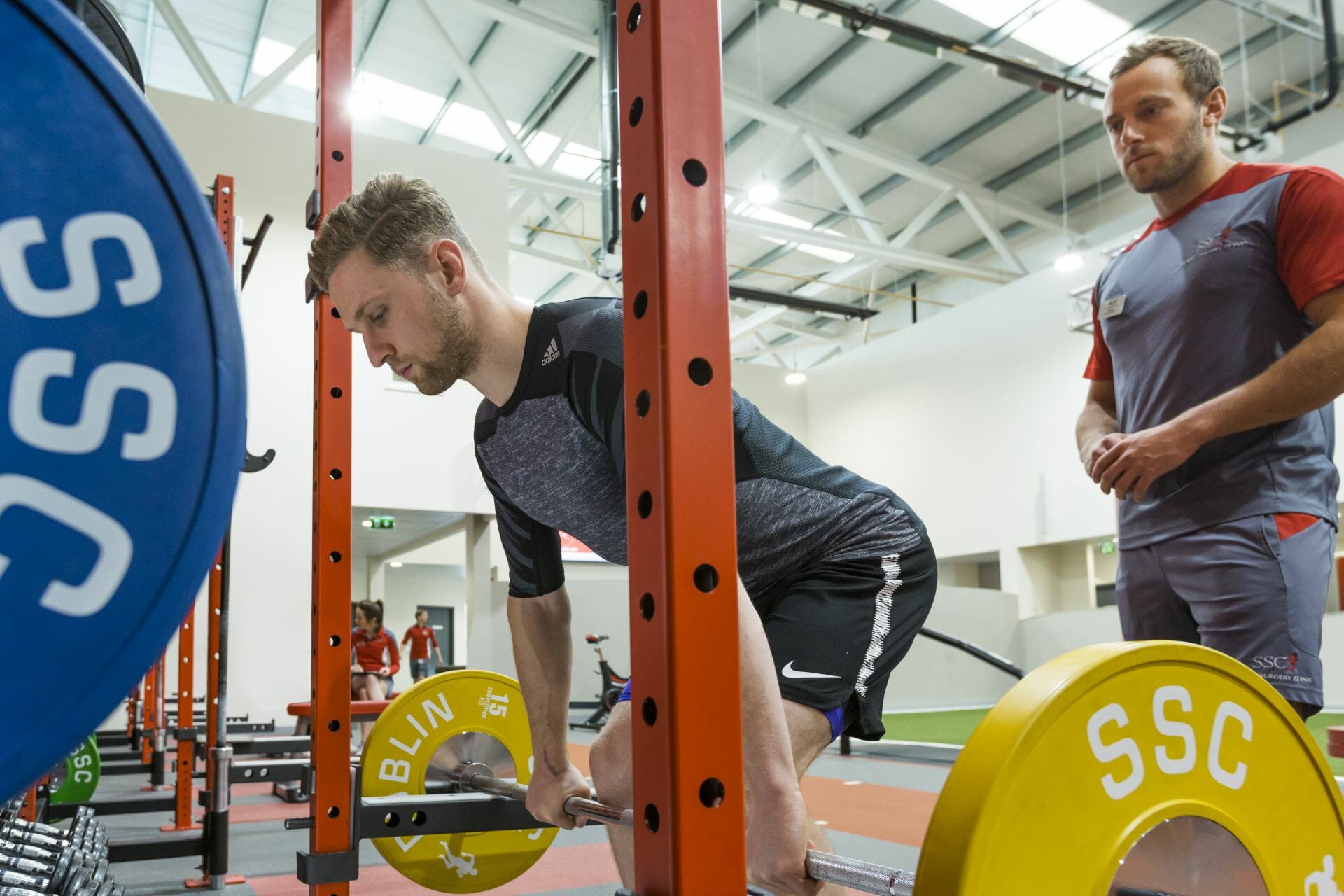

 y of approximately €5.34 billion.
y of approximately €5.34 billion.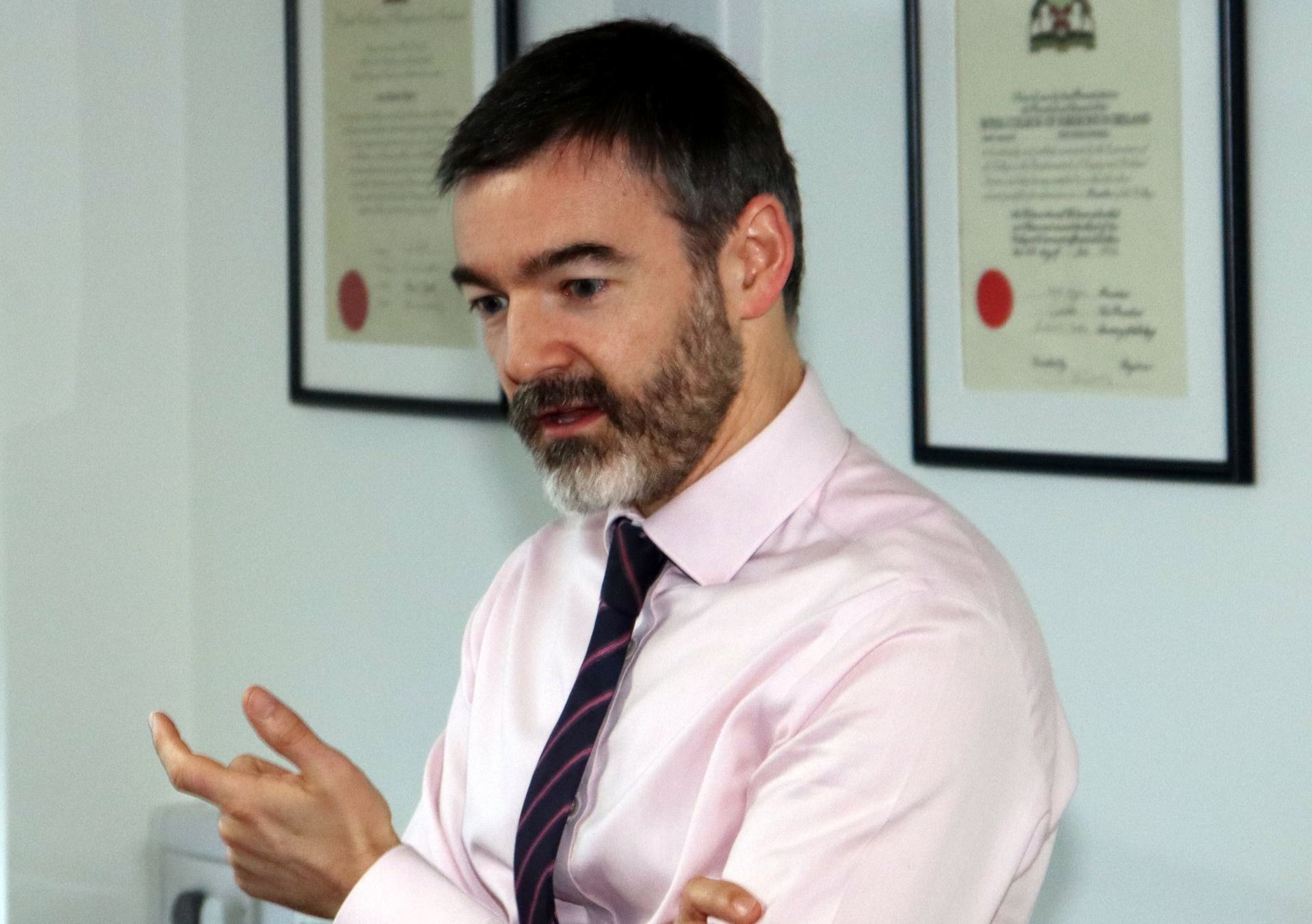

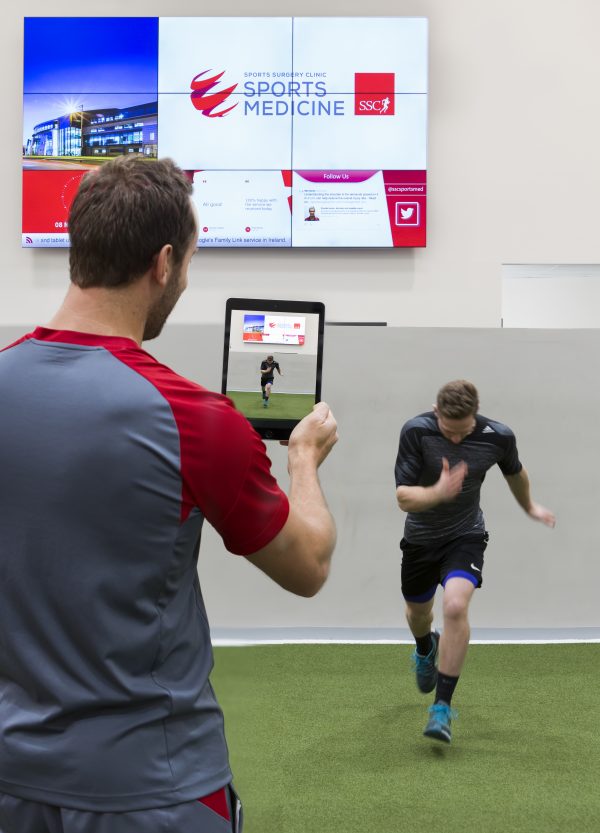
 Running is a foundation skill for many field sports, but it is a skill that is seldom learned and often neglected. At the UPMC Sports Surgery Clinic, we see many GAA players, who present themselves with injuries that stem from running with poor biomechanics.
Running is a foundation skill for many field sports, but it is a skill that is seldom learned and often neglected. At the UPMC Sports Surgery Clinic, we see many GAA players, who present themselves with injuries that stem from running with poor biomechanics.


 ese injuries across both codes and at all levels. Many, if not most, of these players have put in the hard yards in pre-season to get stronger and get fitter. They have followed their Strength and Conditioning plans diligently and are still getting the same niggles they’ve always had. But why is this? They are bigger stronger athletes. Stronger muscles, stronger connective tissue and stronger bones.
ese injuries across both codes and at all levels. Many, if not most, of these players have put in the hard yards in pre-season to get stronger and get fitter. They have followed their Strength and Conditioning plans diligently and are still getting the same niggles they’ve always had. But why is this? They are bigger stronger athletes. Stronger muscles, stronger connective tissue and stronger bones.





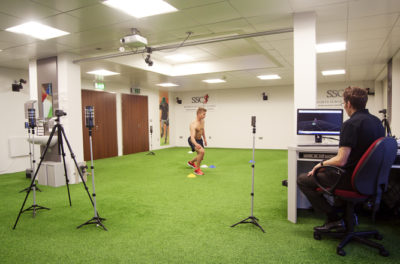 ne of the most feared injuries for any athlete playing multi-directional field sports.
ne of the most feared injuries for any athlete playing multi-directional field sports.



